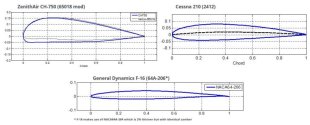Did they took the tarpaulins off the CCAs like i see they did for most of the other systems? If so, could briefly describe how the two biggest ones and the smaller tailed diamond wing one look like, like where are the intakes etc.? Were there any names written on them?Confirmed from the street that there are 5 different stealthy UCAV/CAC. Apart from GJ11, two are double the size of the other two.
You are using an out of date browser. It may not display this or other websites correctly.
You should upgrade or use an alternative browser.
You should upgrade or use an alternative browser.
Chinese UCAV/CCA/flying wing drones (ISR, A2A, A2G)
- Thread starter VESSEL
- Start date
Did they took the tarpaulins off the CCAs like i see they did for most of the other systems? If so, could briefly describe how the two biggest ones and the smaller tailed diamond wing one look like, like where are the intakes etc.? Were there any names written on them?
Not yet. I suppose this answers the rest of your questions.
I also wonder what engines these drones will use?Starting to look like they decided on dorsal mounted intake for all their CCAs?
Maybe decided weapon bay depth, speed and network ability is more important than maneuverability.
For unmanned drones the intake position is arbitrary. If extreme maneuvers are needed, the plane can just turn upside down and perform a negative-g turn to avoid choking the inlets.Starting to look like they decided on dorsal mounted intake for all their CCAs?
Maybe decided weapon bay depth, speed and network ability is more important than maneuverability.
Most planes these days use cambered airfoil which means when flying upside down the wings will generate negative lift and will require elevator trimming to remain stable. So, no performing negative G turns will in fact be worse because you are fighting against the lift from the wings to keep the nose up.For unmanned drones the intake position is arbitrary. If extreme maneuvers are needed, the plane can just turn upside down and perform a negative-g turn to avoid choking the inlets.
Last edited:
I also wonder what engines these drones will use?
The larger-sized ones could be powered by single WS-10 (and WS-15 in the future), whereas the medium-sized ones could be powered by single WS-13/21 (and WS-19 in the future).
For most cases and except for very-large U(C)AVs (e.g. Malan Black Bat), single-engine-per-airframe would be the most straightforward choice for ease of procurement, logistics, maintenance and ability to sustain material losses due to wartime attrition.
Last edited:
Most planes these days use cambered airfoil which means when flying upside down the wings will generate negative lift and will require elevator trimming to remain stable. So, no performing negative G turns will in fact be worse because you are fighting against the lift from the wings to keep the nose up.

For supersonic wing designs the overwhelming part of the lift comes from the attack angle instead of level flight. Without sufficient thickness perfectly level lift is very hard to achieve, but thick wings have too much drag when flying fast. So there isn't as much difference flying upside down.
For unmanned drones the intake position is arbitrary. If extreme maneuvers are needed, the plane can just turn upside down and perform a negative-g turn to avoid choking the inlets.
I haven't though about it that way, guess that could work.
In fact the plane could be designed to not have a defined dorsal/belly designation. Intake up when take-off/landing and releasing munitions, Intake down when maneuverable flight is required.

